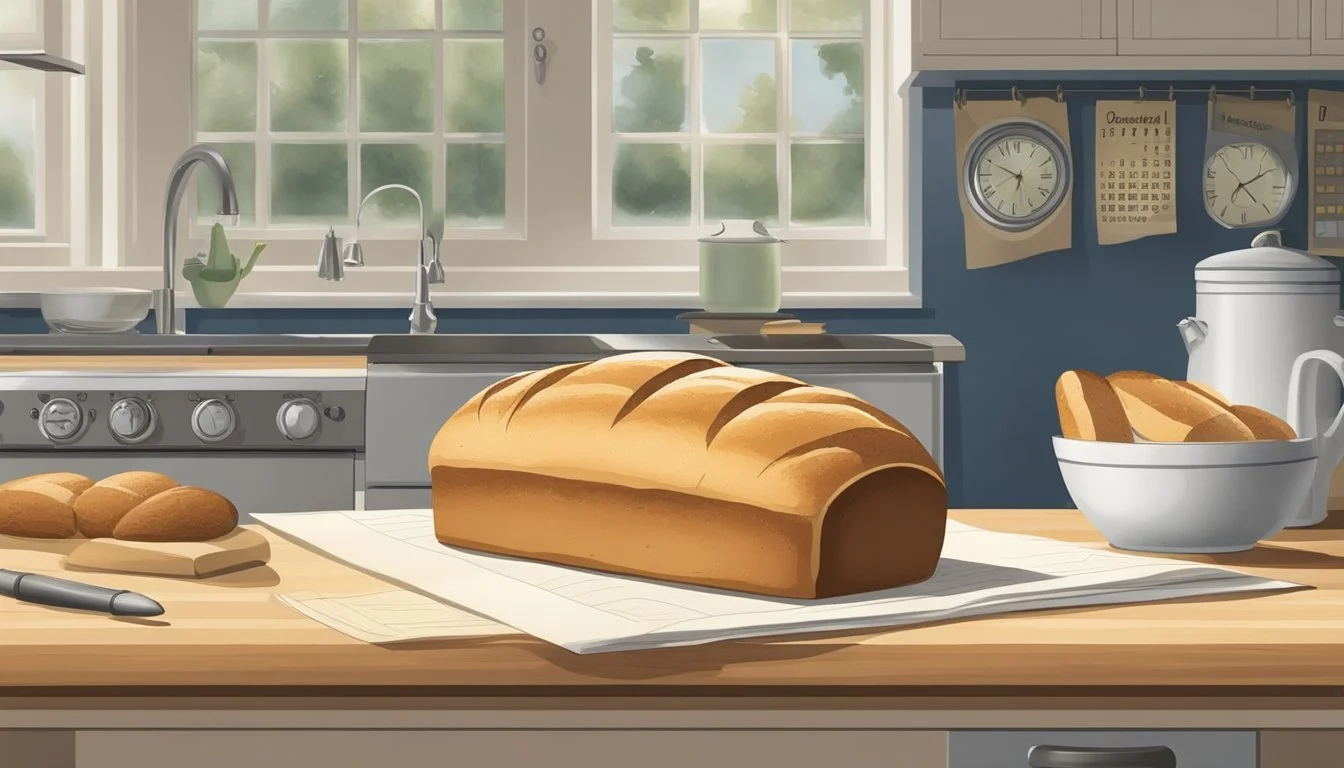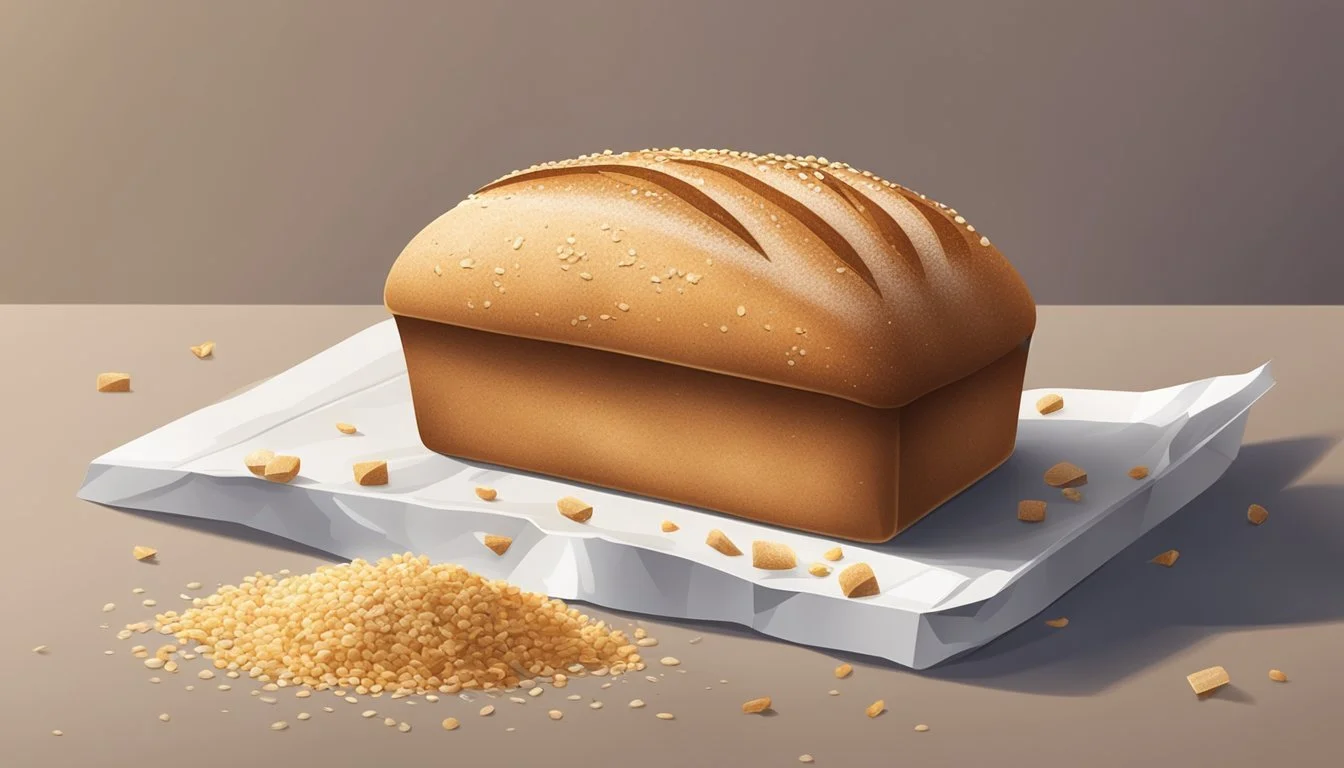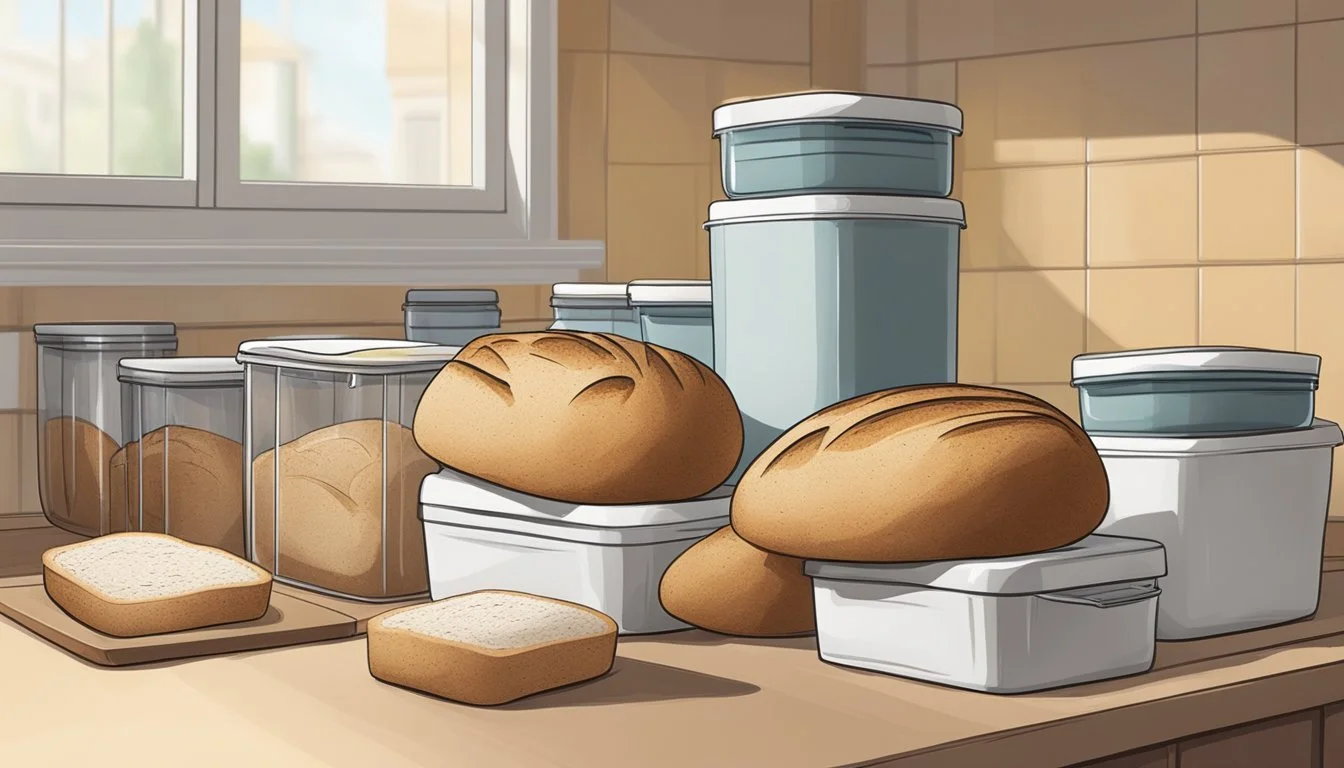How Long Does Bread Last?
Shelf Life and Storage Tips
Bread (What wine goes well with bread?) is a staple food in many diets worldwide, providing a versatile base for meals from breakfast toppers to dinner accompaniments. However, bread's shelf life can be relatively short, with most types lasting just 3-7 days at room temperature. The lifespan of bread is influenced by several factors including ingredients, preservative content, and storage method. Ensuring proper storage can significantly help preserve bread's freshness and extend its edible period.
To maximize the life of bread, keeping it sealed in an environment that balances moisture and air circulation is critical. While counter storage in a bread box or paper bag is common for short-term use, refrigerating or freezing can prolong bread's usability. Bread stored in the refrigerator can last for up to a week, and when properly wrapped and frozen, it may remain good for up to three months.
It's important to know how to recognize if bread has gone bad. Visible mold, off odors, and an overly hard texture are clear indicators that bread should no longer be consumed. Observing these signs can prevent the undesirable effects of consuming spoiled food, ensuring that the bread is enjoyed while it is still a nutritious and delicious part of one's diet.
Understanding Bread Freshness
Bread freshness is crucial to its taste and safety, with its lifespan being influenced by various factors from ingredients to storage. Here is a closer examination of these aspects.
Factors Affecting Bread Freshness
Several key elements determine how long bread retains its freshness:
Ingredients: The types of flour and other ingredients used in bread can affect its freshness. For example, bread made with whole wheat flour generally has a shorter shelf life because of the higher oil content, which can turn rancid. Preservatives, often found in store-bought bread, can extend shelf life by inhibiting mold growth.
Moisture: Bread's texture and freshness are greatly impacted by moisture. Too much moisture can lead to mold growth, while too little can make bread become stale faster.
Storage Conditions: How bread is stored is often just as important as its ingredients. Bread should be kept in a dry, cool place and properly sealed to maintain its freshness.
Storage Method Expected Shelf Life Room Temperature 3-7 days Refrigerator Not recommended (can dry out bread) Freezer Up to 3 months
Shelf Life: Typically, store-bought bread lasts longer than homemade variants due to added preservatives. On average, bread is best consumed within 3-7 days when maintained at room temperature.
Addressing these elements ensures the maximum enjoyment and safety of both homemade and store-bought breads. Proper storage and understanding the ingredients' role play vital parts in managing bread freshness.
Storage Solutions
Proper storage can significantly extend the shelf life of bread, maintaining its freshness and flavor. From choosing the right environment to selecting appropriate containers, the following methods delineate how one can store bread effectively.
Optimal Storage Conditions
To keep bread at its best, storing it in a cool, dry place away from direct sunlight is essential. Ideally, bread thrives in temperatures around 68°F (20°C). High temperatures can hasten mold growth, while too much humidity can lead to sogginess. Air circulation is also important to prevent condensation, which is why storing it in a bread box or paper bag can be quite beneficial.
Temperature: Around 68°F (20°C)
Humidity: Low
Light: Minimal
Air Circulation: Moderate
Short-Term Storage Methods
For bread that will be consumed within a few days, keeping it in a bread box or wrapped in a paper bag maintains the right balance of air circulation and moisture. If one does not have a bread box, a pantry or a cupboard can serve as alternatives. Plastic bags are not recommended for short-term storage as they can trap moisture and expedite mold growth.
Bread Box: Balances moisture and air
Paper Bag: Allows bread to "breathe"
Pantry/Cupboard: Cool and dry
Long-Term Storage Solutions
Freezing bread is the best long-term storage solution, preserving its freshness for up to six months. Before freezing, one should ensure the bread is completely cooled to prevent condensation. Wrapping it tightly in plastic wrap followed by a freezer bag or aluminum foil can protect against freezer burn.
Freezing: Extends freshness up to 6 months
Packaging for Freezing:
Cool bread completely
Wrap tightly in plastic wrap
Place in a freezer bag or wrap in aluminum foil
Seal and label with the expiration date
Refrigeration is not typically recommended, as it can cause the bread to dry out and stale more quickly compared to room temperature storage.
Identifying and Preventing Spoilage
In the lifespan of bread, it's essential to recognize the signs of spoilage to avoid health risks. Prevention methods can significantly extend bread's edibility.
Common Signs of Bread Spoilage
Visual Inspection: Mold typically appears as fuzzy spots on the surface of the bread and can be green, white, blue, or black. It's easy to spot mold growth which signifies bread spoilage.
Smell: An off smell or a sour odor is a clear indicator that bread has begun to spoil. The presence of mold can produce a distinct musty odor.
Taste: It is generally not advised to taste bread if spoilage is suspected, but a sour or unpleasant taste can confirm that bread is no longer safe to consume.
Health Risks of Consuming Spoiled Bread
Mycotoxins: Some molds produce mycotoxins which can be hazardous to health, potentially causing digestive problems or adversely affecting the immune system if consumed.
Bacterial Infection: Spoiled bread can harbor harmful bacteria that may not be visible, leading to illness if ingested.
Preventative Measures:
Storage: Keep bread sealed in a dry and cool environment. Refrigeration can extend freshness, though it may affect texture.
Hygiene: Use clean hands and utensils to handle bread to minimize contamination.
Consumption: Regularly check bread for spoilage and consume it within its optimal freshness period, typically 3-7 days at room temperature.
Extending the Life of Bread
Proper storage and understanding of ingredients can significantly influence the longevity of bread's freshness. Here's how to maintain its optimal quality.
Techniques to Extend Bread's Freshness
Correct Storage: Bread remains freshest when stored at room temperature in a cool, dry place. A bread box optimally balances moisture levels, preventing the bread from becoming dry or encouraging mold growth. Avoid refrigeration, as it can accelerate staling due to retrogradation of the starches within the bread.
Storage Location Expected Lifespan Room Temperature 3–7 days Refrigerator Not recommended Freezer 3 months or longer
Preservatives: Certain additives such as calcium propionate, sodium benzoate, and potassium sorbate can be found in some store-bought bread and help in preventing mold and extending the shelf life. However, the use of such preservatives might vary with the bread type.
Ingredients Impact:
Sugar Content: Higher sugar levels can act as a natural preservative, extending freshness.
Sourdough Advantage: The lactic acid bacteria in sourdough create an acidic environment that helps it stay fresh longer than other bread types.
Bread's Best-by Date: Always check the best-by date to ensure the bread is at its freshest when purchased. However, relying solely on this date is not ideal, as proper storage techniques post-purchase are crucial.
Managing Stale Bread: Instead of discarding, stale bread can be repurposed:
Croutons: Stale bread makes excellent croutons for soups and salads.
Breadcrumbs: It can also be processed into breadcrumbs, useful for coating or binding in various recipes.
Freezing Bread: To extend the life of bread significantly, freezing is the most effective method. Sliced bread can be frozen and then toasted directly from frozen, maintaining the crumb's quality.




